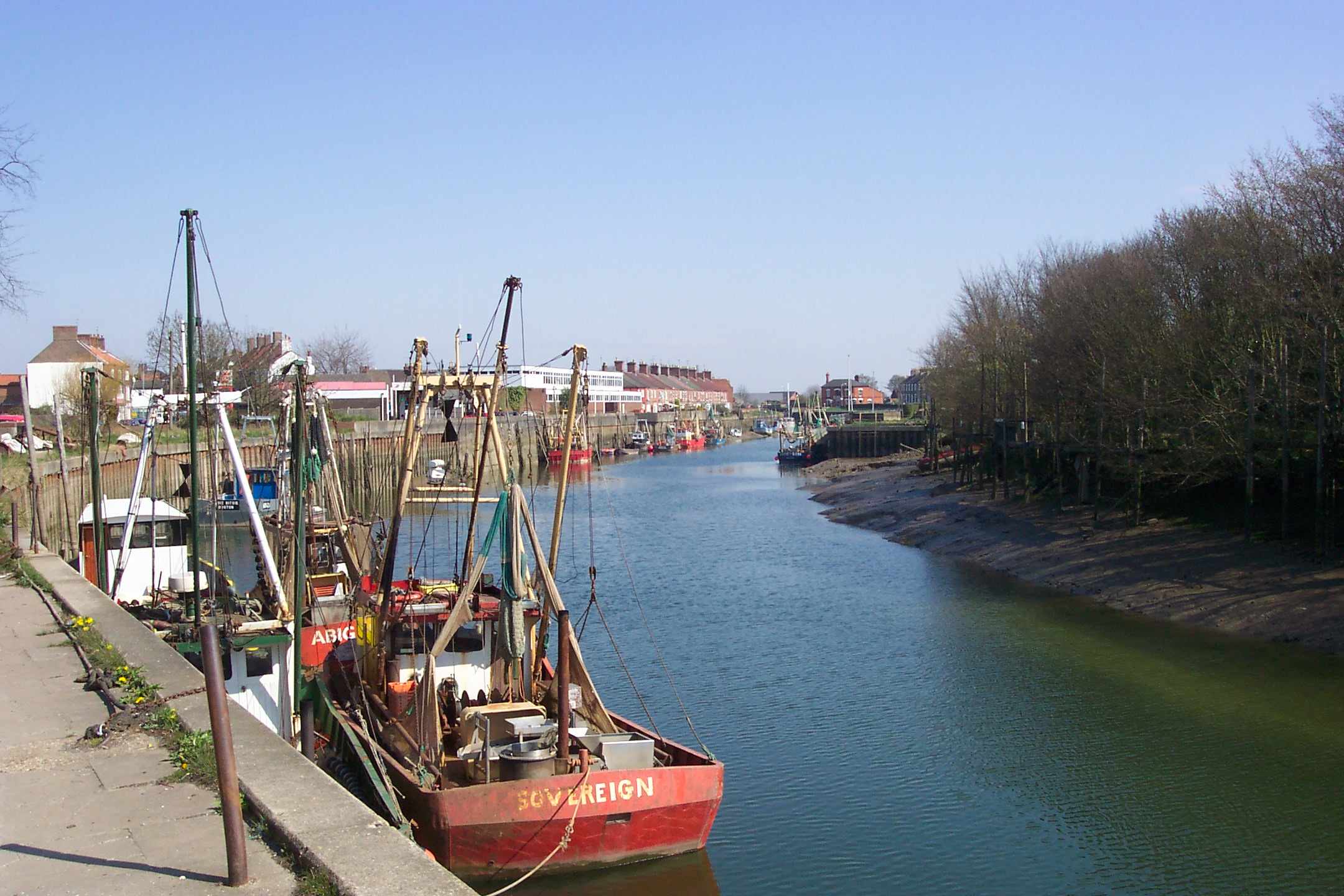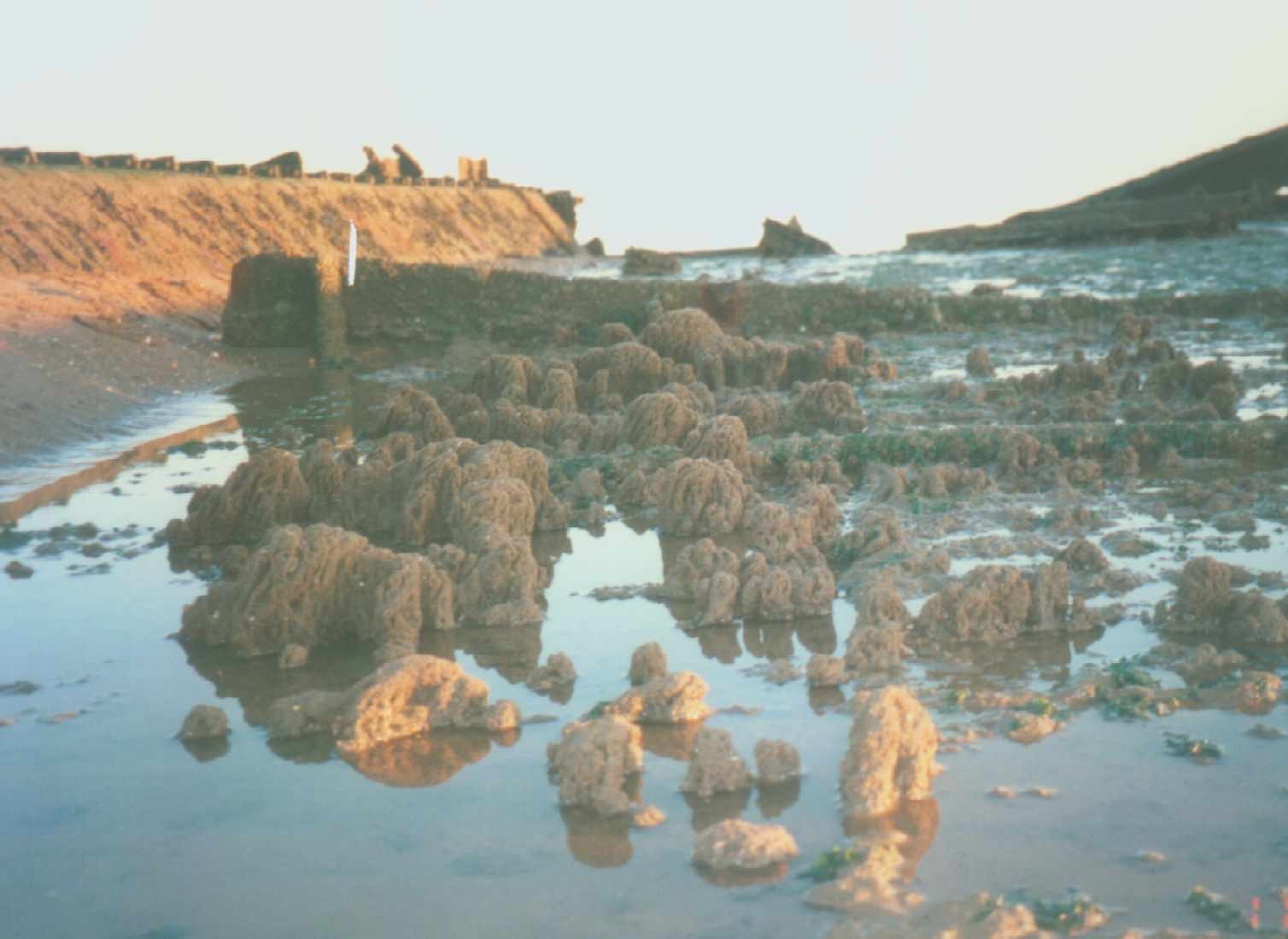FISHERIES MANAGEMENT AND THE ENVIRONMENT
 Commercial
fishing activities inevitably have an impact on the environment. As managers
of inshore fisheries, SFCs are tasked with ensuring those impacts are acceptable
– i.e. occur at a level that the natural environment can withstand.
This task is particularly challenging given the unpredictability of fish
stocks, economic pressures to increase fishing efficiency, difficulties
in assessing the condition of the marine environment, and a poor understanding
of the features and processes existing at sea. But as successful fisheries
can only exist in healthy environments, it is vital that we look beyond
fish stocks and consider the whole ecosystem when making fisheries management
decisions.
Commercial
fishing activities inevitably have an impact on the environment. As managers
of inshore fisheries, SFCs are tasked with ensuring those impacts are acceptable
– i.e. occur at a level that the natural environment can withstand.
This task is particularly challenging given the unpredictability of fish
stocks, economic pressures to increase fishing efficiency, difficulties
in assessing the condition of the marine environment, and a poor understanding
of the features and processes existing at sea. But as successful fisheries
can only exist in healthy environments, it is vital that we look beyond
fish stocks and consider the whole ecosystem when making fisheries management
decisions.
The underlying basis of fisheries management is sustainability:
| Sustainable stocks: | Maintaining fish populations at self-supporting levels (or returning them to healthy levels in over-exploited fisheries); |
| Sustainable techniques: | Ensuring the use of suitable fishing gear to select the target species without damaging juvenile fish or other marine life; |
| Sustainable habitats: | Ensuring fishing activities do not excessively damage the marine environment. |
Legislation
The first two themes relate to stock conservation measures and technical measures, and are the traditional approaches to fisheries management. In recent years a greater emphasis has been placed on the effects fishing is having on the wider ecosystem, including the sea bed and fish predators. This is reflected in UK legislation developed in the 1990s, which expanded the powers and responsibilities of SFCs to take environmental factors into account:
Act / Regulation |
Implications for Sea
Fisheries Committees |
| Sea Fisheries (Wildlife Conservation) Act 1992 | Requires SFCs to recognise conservation needs and balance these with other considerations when making decisions |
| Conservation (Natural Habitats &C.) Regulations 1994 | SFCs must protect wildlife within Special Areas of Conservation (sites designated for important habitats and species), and/or Special Protection Areas (sites designated for important birds and their habitats) by ensuring that any fishing activities they authorise do not cause significant damage to the sites. [For details on conservation sites in the ESFJC District, see below.] |
| Environment Act 1995 | States that SFC members should include one (or more) “environment” member(s), to provide an environmental input to meetings. It also enables fisheries byelaws to be made or withdrawn for environmental purposes. |
Wildlife & Countryside Act 1981, amended by Countryside & Rights of Way Act 2000 |
Gives extra protection to conservation sites known as Sites of Special Scientific Interest, or SSSIs. SFCs must obtain permission from the Government’s nature conservation agency, English Nature, before they authorise fishing activities or change fisheries management within SSSIs. |
Fisheries management within conservation sites
Taking environmental requirements into account means that ESFJC must work closely with conservation groups and other organisations. English Nature provides advice on what habitats and species need to be protected. SFCs must consult with English Nature before authorising particular fishing activities within conservation sites.
 The
ESFJC District contains three areas of international conservation importance:
the Humber Estuary (the southern edge of this is within ESFJC District);
the Wash and North Norfolk Coast (Lincolnshire/Norfolk); and the Stour and
Orwell Estuaries (Suffolk/Essex border). These sites contain Special Areas
of Conservation (SACs) and Special Protection Areas, and are called European
Marine Sites (EMS), which means they are protected under international legislation
and form part of a network of marine conservation sites throughout Europe.
Much of the coast is also designated for its national wildlife or geological
importance, under titles such as Site of Special Scientific Interest (SSSI),
National Nature Reserve (NNR) and Area of Outstanding Natural Beauty (AONB).
The
ESFJC District contains three areas of international conservation importance:
the Humber Estuary (the southern edge of this is within ESFJC District);
the Wash and North Norfolk Coast (Lincolnshire/Norfolk); and the Stour and
Orwell Estuaries (Suffolk/Essex border). These sites contain Special Areas
of Conservation (SACs) and Special Protection Areas, and are called European
Marine Sites (EMS), which means they are protected under international legislation
and form part of a network of marine conservation sites throughout Europe.
Much of the coast is also designated for its national wildlife or geological
importance, under titles such as Site of Special Scientific Interest (SSSI),
National Nature Reserve (NNR) and Area of Outstanding Natural Beauty (AONB).
SFCs must take these designations into account
when managing fisheries within these sites. In addition to working with
conservation groups, SFCs collaborate with other local organisations to
produce management schemes. In light of the importance of the site for fisheries,
ESFJC took on the role of lead authority in a management group for the Wash
& North Norfolk Coast EMS, details of which can be found at www.esfjc.co.uk/ems.htm
ESFJC also contributes to non-statutory estuary management plans for the
Wash estuary and the Stour and Orwell estuaries within the District, placing
fisheries in a wider socio-economic as well as nature conservation context.
See www.washestuary.org.uk and www.stourandorwell.org
More information on conservation sites can be found on the English Nature
website:
www.english-nature.org.uk
Other Sea Fisheries Committee environmental work: input to environmental impact assessments
SFCs also provide an input to environmental impact assessments for coastal and offshore developments, including marine aggregate extraction, pipeline construction and more recently, windfarm construction. It is important that fisheries are considered when plans are drawn up for these projects, and SFCs are often in a position to provide developers with information on fishing activity and fish resources in particular areas. The sea off the East Coast of England is particularly rich in geological resources (sands and gravels) and energy (oil and gas, wind and possibly wave or tidal power) which need to be developed sensitively in relation to the wider environment, including fishing interests. Many parts of the East Coast are also susceptible to coastal erosion, requiring sea defence works that could also impact on fisheries if not carefully managed.
Useful related websites:
| Marine aggregate extraction: | www.crownestate.co.uk/estates/marine/marine_aggs.shtml |
| Offshore wind energy: | www.offshorewindfarms.co.uk/ |
| www.crownestate.co.uk/estates/marine/windfarms.shtml | |
| Coastal defences: | www.terryoakes.com/coastal.htm |